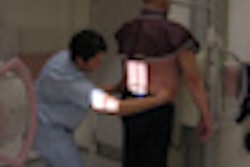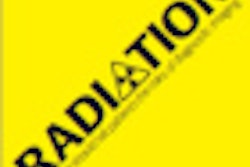The European Society of Radiology (ESR) has published a new white paper on radiation protection, focusing on the role of justification, evidence-based referral guidelines, optimization, diagnostic reference levels, clinical audits, and quality assurance programs.
"Creating the awareness of the impact of radiation exposure based on an understanding of the potential effects of x-ray examinations is the first step. Radiologists and clinicians must know the diagnostic potential and the biologic impact of the examinations they request and/or perform; based on this, they will choose the best diagnostic pathway, maybe avoiding radiation exposure by using ultrasound or MRI, maybe using the best x-ray-based imaging test, and maybe
even by choosing other diagnostic tools," the authors stated in the online first publication in Insights into Imaging (3 June).
Data collected during the last 12 years show a medical effective dose per caput of three ranges: low exposure in the U.K., the Netherlands, and Sweden (0.4-0.75 mSv/year); intermediate exposure in Norway and Switzerland (1.1 mSv/y); and higher exposure in Luxemburg, Belgium, and Germany (1.8-2.0 mSv/year). There has been a universal trend of increasing medical exposure, mostly caused by CT, but nuclear medicine -- currently accounting for around 7% of the total medical exposure in Germany -- may become much more important with the increasing use of PET, they wrote.
Among the three key points highlighted in the paper are:
- The most likely biological impact of imaging using ionizing radiation is carcinogenesis; the ALARA (as low as reasonably achievable) principle has to be applied to every patient.
- Education and training are compulsory prerequisites for radiation protection in clinical radiology.
- Children, potentially pregnant and pregnant women, as well as young adults, deserve special caution since young tissue is biologically more sensitive to radiation effects.
Justification is one of the most critical steps in medical radiation protection, the authors said. Many scientific surveys have clearly shown a deficit in knowledge about the risks of diagnostic imaging among medical professionals, both referring doctors and radiological staff, they noted.
According to the International Commission on Radiological Protection (ICRP), justification must be done at three levels: in general for the method, specifically for evaluating a clinical suspicion/entity, and individually for the current patient and her/his complete medical, psychological, and social situation. Justification at the second level has to be evidence-based, applying the scientific results of high-quality studies.
Once a radiological examination is justified, optimization is the next challenge. Optimization should follow the ALARA principle, and it has to be adapted to each radiological procedure and situation, the authors wrote.
Diagnostic reference levels (DRLs) are important here. According to the ICRP, the DRLs are benchmarks (75th percentile of a patient population), which should not be exceeded in a group of patients of average body size rather than absolute thresholds of individual exposure per examination. In heavy patients or in complex procedures, reaching the DRL should not be a reason to stop the examination or the treatment. Even for fluoroscopically guided interventional procedures, the ICRP recommends the use of DRLs, provided that the complexity of the procedure is taken into account. The mean exposure has to stay within the DRL, and DRLs have to be adapted to children.
"Internal and external audits are an excellent tool to regularly check the degree and quality of implementation of justification and optimization in a radiology department.
They contribute to improving the medical processes in general and -- since they are not used often yet in Europe -- have to be introduced in the majority of member states in the coming years," the authors pointed out.
They recommend implementing QA programs. These programs consist of planned and systematic actions providing confidence that a facility will produce consistently high-quality images with minimal exposure. They must guarantee periodic checks of all components of an x-ray system. Their success relies on a clear definition of responsibilities of the team members and starts with the specifications of the equipment for purchase.
The white paper was approved by the ESR Executive Council in May 2011. It was prepared by the ESR Subcommittee on Radiation Protection, whose chairman is Dr. Peter Vock, professor of radiology at the DRNN in Bern University Hospital, Switzerland. The head of the national societies' committees are L. Donoso, J. Damilakis, H. Ducou le Pointe, R. Loose, C.Owens, M. Prokop, and I. Rosenberg. The co-opted observers/advisers are E. Vaño (ICRP), C. Cousins (ICRP), A. Meghzifene (IAEA), and H. Imhof.



















